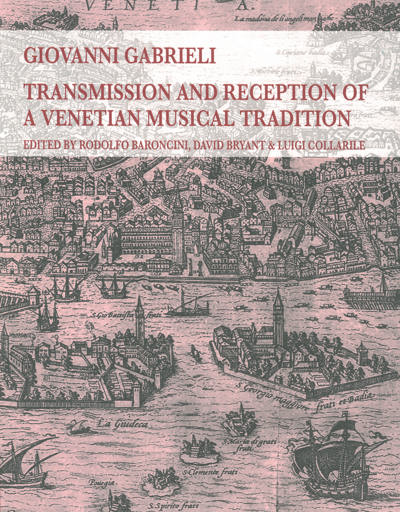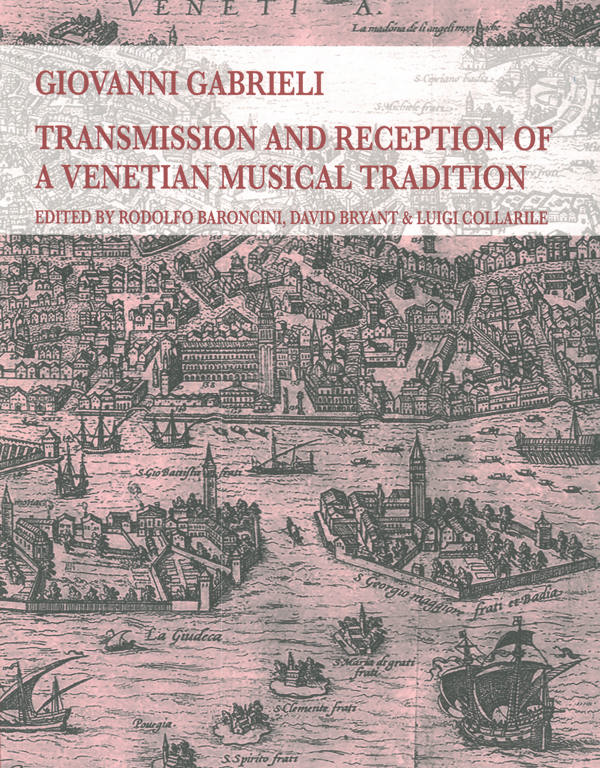Giovanni Gabrieli.Transmission and Reception of a Venetian Musical Tradition
Rodolfo Baroncini, David Douglas Bryant, Luigi Collarile (eds)
- Pages: 262 p.
- Size:216 x 280 mm
- Illustrations:124 b/w
- Language(s):English, Latin, Italian
- Publication Year:2016
- € 120,00 EXCL. VAT RETAIL PRICE
- ISBN: 978-2-503-57027-3
- Paperback
- Available
“Questo ricco volume di saggi, pregevole non soltanto per la varietà dei contributi ma anche per il taglio multidisciplinare degli studi qui raccolti, costituisce da un lato una fonte ineludibile per quanti si avvicineranno d’ora in avanti alla figura e all’opera di Giovanni Gabrieli (…) dall’altro apre stimolanti e nuove vie di ricerca.” (Michelangelo Gabbrielli, in Rivista Italiana di Musicologia, LIII, 2018, p. 224)
“This elegant tome in the new series Venetian Music— Studies (…) is full of useful information. Officially the central focus is on Giovanni Gabrieli, but several contributions give generous coverage to Andrea’s music. The volume expands our knowledge of both Gabrielis and the impact of their music on contemporaries, students and compositional practices in the range of venues where their influence spread (…) this book is a valuable and eminently useful resource.” (Eleanor Selfridge-Field, in Early Music, XLVI.1, 2018, p. 167-169)
“In sum, then, this is an important and handsome book that will be of particular interest to musicologists and period performers and that makes important interventions in current debates about the status of the musical score, the role of improvisatory practices in early modern music performance, and the continuity of musical practices between the Renaissance and Baroque in the face of the traditional narrative of rupture.” (Tim Shephard, in Renaissance Quarterly, LXXI/2, 2018 p. 777)
Knowledge and debate in the field of sixteenth- and early seventeenth-century Venetian music has greatly benefitted in recent decades from studies of major institutions, composers, repertories and sources, as also from investigations of the quantitative aspects of musical life in what was one of the largest, richest and most commercially oriented cities on the Italian peninsula: the Venetian musical phenomenon includes, on the one hand, regular or sporadic musical activities in the city’s many churches and private palaces (activities which provided significant earnings for large numbers of musicians, whether or not salaried members of the ducal cappella) and, on the other, the auxiliary trades of music printing and instrument making. The transmission of the musical repertories has also received notable attention: in particular, the contemporary and later reception of Venetian musical repertories in different political, linguistic and/or confessional areas. Central, too, have been questions of ‘sound’, both with regard to the particular interaction between musical composition, the spatial peculiarities and the specific liturgical and ceremonial traditions of the Venetian ducal chapel, and in the context of music-making at large.
This collection of essays on the life, times and works of a composer who ranks among the most outstanding musical personalities of his day variously unites these strands in an albeit partial attempt to interpret Giovanni Gabrieli’s output and activities in their Venetian context and, at the same time, cast light on their broader historiographical significance: on the one hand Gabrieli as point of synthesis of a complex Venetian musical tradition, on the other his interaction with and impact on contemporary musical life, his influence on later generations of composers both at home and abroad, the rediscovery of his achievements by nineteenth- and twentieth-century historians and performers, the revisitations of his music by twentieth-century composers.

